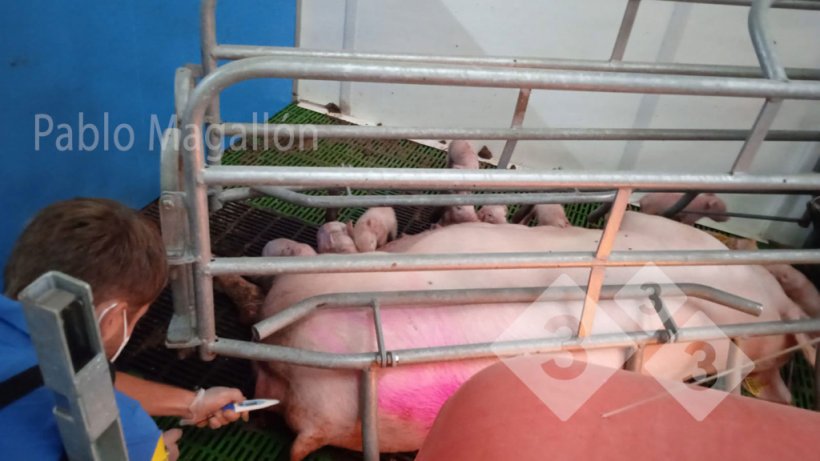Introduction
After the sow has farrowed, the focus shifts from the sow to the piglets with the intentions of minimizing pre weaning mortality and producing quality weaned pigs. Producing heavy piglets at weaning with structural soundness and uniformity will ultimately set the pigs up for success in the following stages of their life, as they make their way to market. However, it is important to not only focus on the piglets during lactation, but the sows as well as 3 out of every 4 sows bred every week are weaned sows that left the farrowing room the week before.

Previous research and experience have demonstrated the positive effects of good animal husbandry practices and high feed intake during lactation on sow reproductive performance. Meaning, what happens in lactation affects the sow in the subsequent breeding, gestation, and lactation period. Not to mention, gestation management practices, specifically related to female body condition, can have an effect on how much feed females will consume in lactation. Thus, it is important that the different teams (breeding, gestation, and lactation) within a sow farm work together, to achieve the same goal.
The purpose of this article is:
- to highlight how litter size can be affected by feed intake
- provide ideas on how to identify low eaters
- suggest management strategies to support high feed intake while sows are in the farrowing house
Feed intake and subsequent litter size
It is well documented that the first lactation can be challenging for gilts and as a consequence, negatively affect subsequent reproductive performance. In general, first parity sows have low feed intake in lactation and cannot meet the demands of the vigorous litter of suckling piglets. Observational field data, collected by our technical team, found large variations in lactation feed intake among sows. In addition, the data suggested that litter size increases with the previous lactation feed intake (Figure 1). In other words, the more feed consumed by sows in lactation, the more piglets they will have in their next litter. This finding emphasizes the importance of feed intake in lactation and encourages prevention and mitigation strategies for factors that may be limiting feed intake.

Fever control
Fever is defined as a rise of the body temperature, which typically occurs as a response to infection. Fever after farrowing is usually the consequence of an infection in the uterus, when ascending bacteria present in the farrowing area and/or in sow’s skin is carried beyond the cervix.
Determining if a sow has a fever or not is an imperative production practice that allows staff to identify females who need treatment in a timely manner

First, it is important to define when sow body temperatures should be determined. The best strategy is to determine sow body temperature the morning after the animal has farrowed. Thus, approximately 24 hours after the time of farrowing. Depending on the staffing available at the farm, body temperatures could be determined in the morning and the afternoon to more accurately access fevers.
In lactating sows, a fever is defined as body temperature at or above 39.4° C ( 103° Fahrenheit)
Empirical field observations implementing the above temperature management strategy have shown positive effects in preventing reductions in feed intake. If body temperatures are not taken, typically females stop eating as a result of the infection and this alerts the caretake that something is wrong. If sow body temperature is obtained, caretakers can identify and treat females sooner, preventing or reducing the drop in feed intake. Thus, early identification allows the staff to implement interventions sooner and control negative repercussions faster.
In the author's field experience, any thermometer is adequate to obtain sow body temperature. The differences are simply a choice of cost and how long it takes to obtain the temperature. New digital thermometers utilized in human medicine take 8 to 10 seconds, which in modern pig production, could be a plus. Although digital thermometers are more expensive, they will quickly pay for themselves if used as described above and contribute to high feed intake, resulting in high litter sizes in the following farrowing.
Lastly, the following are additional management strategies that will pose as barriers to infection, thereby reducing dips in lactation feed intake:
- Scraping manure behind sows due to farrow, once or twice daily
- Limit sleeving to sows that need obstetric support after 20-30 minutes from the birth of the previous piglet
- Wearing a well lubricated long plastic sleeve
- The plastic gloves should be kept protected from contamination with dust and/or manure
- Making sure day one team members have short nails and do not wear any rings while at the farm
- Ensuring sows have adequate water and a minimum flow of 2 L/min
- Gilts are trained in how to identify and utilize the water sources prior to their due date.











